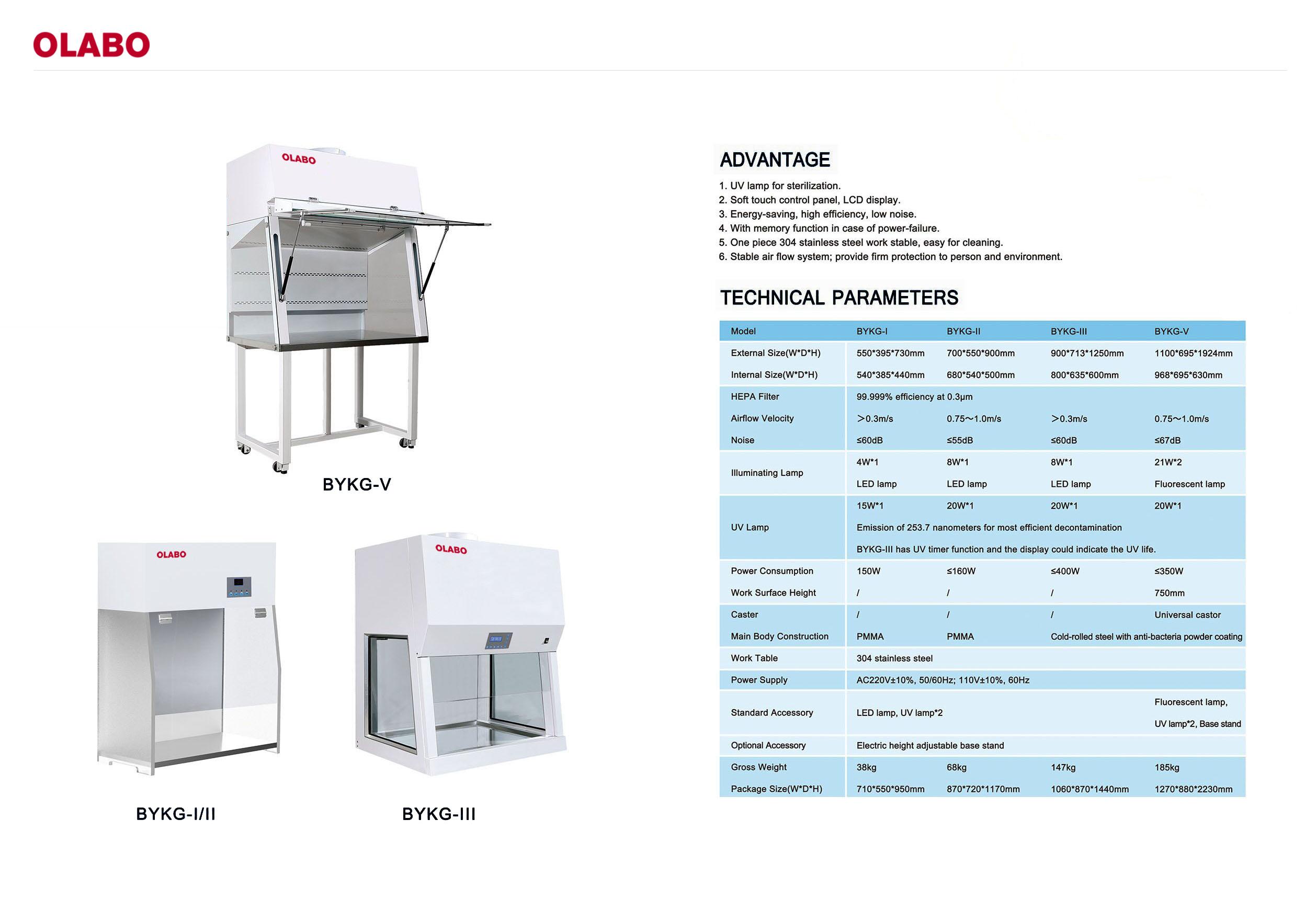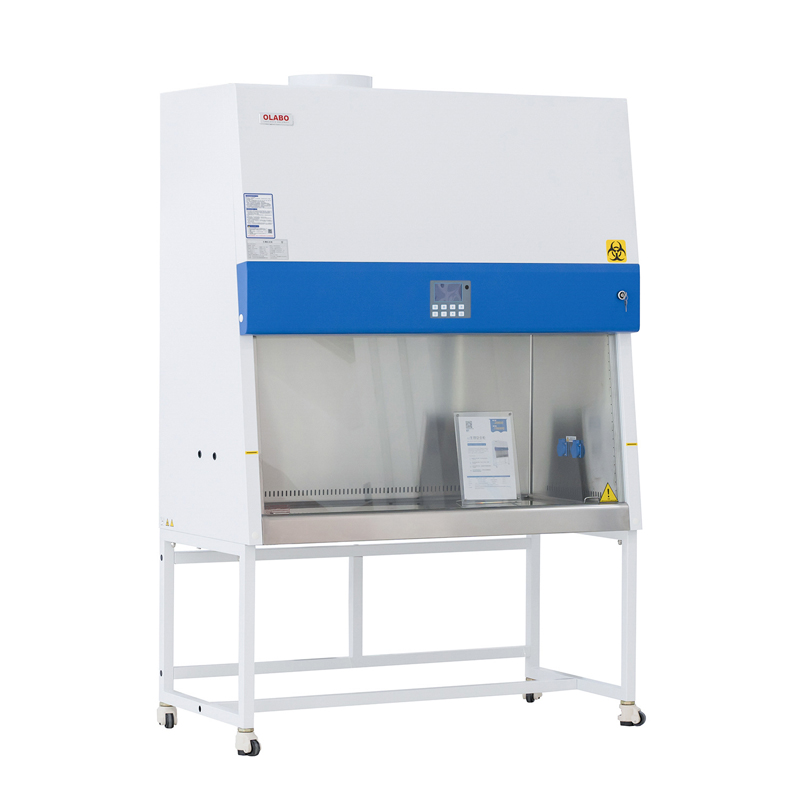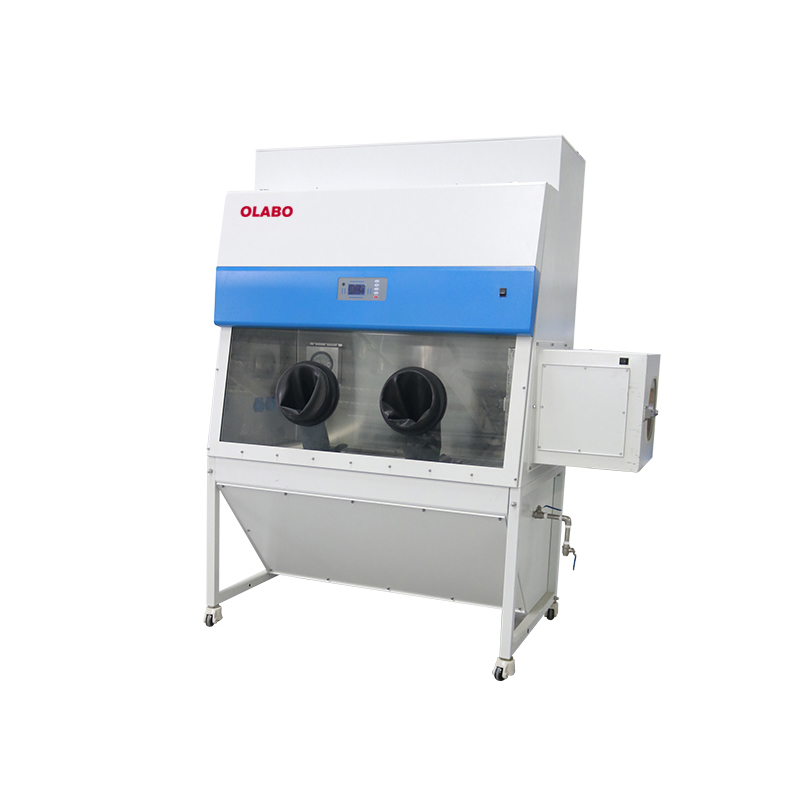The biological safety cabinet is a box-type air purification negative pressure safety device that can prevent certain dangerous or unknown biological particles from aerosols from escaping during the experimental operation and processing. But did you know that biological safety cabinets can be divided into three categories based on their ability to contain biological agents at work? What are the specific three categories, let’s talk about them together.
Class I biological safety cabinet
Class I biological safety cabinet is to provide personnel safety and environmental protection when handling chemicals and powders.
Unlike a fume hood, a high efficiency air filter protects the environment by filtering the air before it is discharged.
Class I of safety cabinet is not suitable for handling research materials that are susceptible to air pollution, because the inward flow of unfiltered air from the laboratory may bring microbial contaminants into the safety cabinet. In these cases, Class II biological safety cabinets are more suitable.
Class II biological safety cabinet
Class II biological safety cabinets must meet the requirements of personnel, environment and product protection. The vertical laminar flow biological safety cabinet provides protection for operators through inflow, provides protection for products through downflow, and provides environmental protection through filtered exhaust.
Biological safety cabinets can be manufactured with triple filters according to DIN12980. The triple high-efficiency air filter system ensures that any possible cross-contamination is eliminated, because the air in the working room must pass through two sets of main high-efficiency air filters. This makes the triple filter cabinet an ideal choice for handling hazardous materials, such as cytostatics, virus manipulation, and category 3 pathogens. The triple filter biological safety cabinet is easier to maintain because it does not need to be decontaminated beforehand.
Class III biological safety cabinet
The Class III biological safety cabinet is an airtight enclosure with a front window that cannot be opened and is completely sealed, so the operator is separated from it by a physical barrier. The cabinet is also called the “glove box”. The work is carried out with long heavy rubber gloves that are air-tightly secured to the ports on the front of the safety cabinet. This allows access and work on your product inside the cabinet without compromising the tightness.
The cabinet is designed to handle high-risk biological agents in Class 4 biosafety laboratories, where maximum containment and protection are required. Examples include Ebola virus, Lassa virus and any pathogen with unknown pathogenicity or risk of transmission. When the Class III biosafety cabinet is installed in a Class 4 biosafety laboratory or facility, it provides an additional level of containment and safety for high-risk work procedures.
Post time: Dec-17-2021



